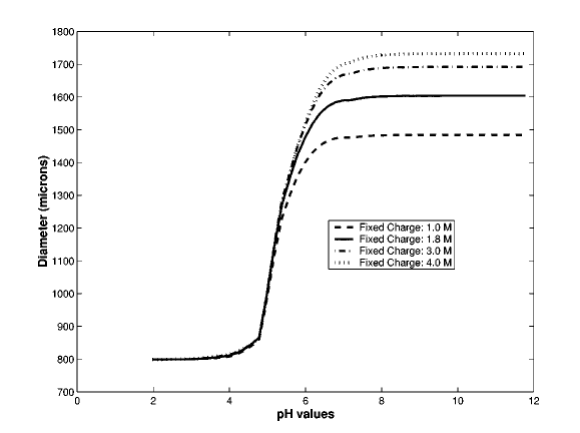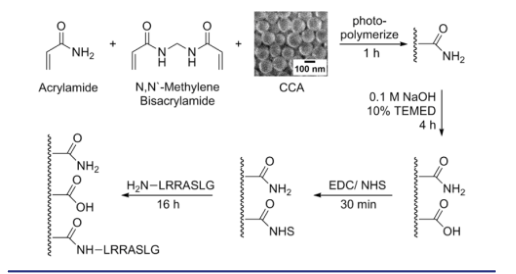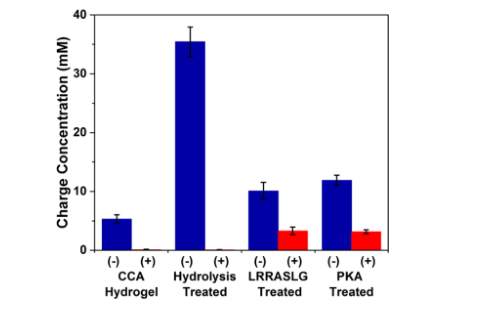用于高离子强度环境下的凝胶基pH响应光子晶体制备与性能研究毕业论文
2021-11-27 22:31:12
论文总字数:25271字
摘 要
pH是溶液中氢离子浓度的一种测度,也是人们所熟知的溶液酸碱度的衡量尺度。在生物、环保、工业、农业、临床等领域中,pH值都有非常重要的作用。pH的检测方法大致可以分为电化学检测和光化学检测。近年来,pH响应性光子晶体成为了一个研究热点。pH响应性光子晶体因具有裸眼可视、低消耗、易小型化等优点,在pH检测方面有着广泛的应用。
然而,目前所报道的大多数pH响应性光子晶体在高离子强度的环境下的灵敏度比较低,其主要原因是目前大多数光子晶体pH传感器制备pH响应性光子晶体膜时,一般是采用静电排斥型胶体粒子,其周期性结构易因外界微量静电型离子或杂质的干扰而遭到破坏。针对这个问题,本文利用空间位阻效应稳定的磁性光子晶体不受离子型单体或引发剂干扰以及体积分数占比非常小的特点,结合含有大量离子型基团的水凝胶基体共同构筑可裸眼识别的高灵敏度光子晶体比色传感器。论文主要研究内容如下:
(1)分析了在高离子强度下提高pH响应性光子晶体的灵敏度的可行性,以聚合胶体晶体阵列(PCCA)和反蛋白石结构响应性光子晶体为例分析了传统pH响应性光子晶体在高离子强度下灵敏度低的缺陷,又从空间位阻型磁性纳米粒子和玻璃基板的使用两方面分析了本文所制备的新型pH响应性光子晶体在解决这一问题上的优越性。
(2)将pH响应性功能单体丙烯酸(AA)和甲基丙烯酸羟乙酯(HEMA)与磁性Fe3O4@PVP粒子相结合,通过一步法共聚制备了光子晶体pH响应凝胶膜传感器。对所得样品的组成结构和光学性能进行测试分析。结果显示该传感器在生理盐浓度(c(NaCl=0.15mol/L))下pH从4.2变化至4.6时,所测得的衍射波长从504.17nm线性增至725.40nm,其灵敏度为553.08nm/pH,相比于文献中的灵敏度有2~3倍的提升。
关键词:pH检测;灵敏度;pH响应性光子晶体
Abstract
pH is a measure of the concentration of hydrogen ions in a solution and is also a well-known measure of the pH of a solution. In biological, environmental protection, industry, agriculture, clinical and other fields, the pH value has a very important role. The detection methods of pH can be roughly divided into electrochemical detection and photochemical detection. In recent years, pH-responsive photonic crystals have become a research hotspot. pH-responsive photonic crystals are widely used in pH detection due to their advantages of being visible to the naked eye, low consumption, and easy miniaturization.
However, the sensitivity of most of the pH-responsive photonic crystals reported in the environment with high ionic strength is relatively low. The main reason is that most of the current photonic crystal pH sensors use electrostatic repulsion when preparing pH-responsive photonic crystal films. The periodic structure of the colloidal particles is easy to be destroyed due to the interference of trace electrostatic ions or impurities from the outside. In response to this problem, this paper uses the characteristics of steric hindrance stable magnetic photonic crystals without interference from ionic monomers or initiators and the very small volume fraction, combined with a hydrogel matrix containing a large number of ionic groups. High-sensitivity photonic crystal colorimetric sensor for naked eye recognition. The main research contents of the paper are as follows:
(1) The feasibility of improving the sensitivity of pH-responsive photonic crystals under high ionic strength was analyzed. Taking the example of polymeric colloidal crystal array (PCCA) and inverse opal structure-responsive photonic crystals, the traditional pH-responsive photonic crystals were analyzed at high For the defect of low sensitivity under ionic strength, the superiority of the new pH-responsive photonic crystal prepared in this paper in solving this problem was analyzed from the two aspects of the use of sterically hindered magnetic nanoparticles and glass substrates.
(2) The pH-responsive functional monomers acrylic acid (AA) and hydroxyethyl methacrylate (HEMA) were combined with magnetic Fe3O4 @ PVP particles, and a photonic crystal pH-responsive gel membrane sensor was prepared by one-step copolymerization. The composition and structure and optical properties of the obtained samples were tested and analyzed. The results show that when the pH of the sensor changes from 4.2 to 4.6 at physiological salt concentration (c (NaCl = 0.15mol / L)), the measured diffraction wavelength increases linearly from 504.17nm to 725.40nm, and its sensitivity is 553.08nm / pH Compared with the sensitivity in the literature, there is a 2 ~ 3 times improvement.
Keywords: pH detection; sensitivity; pH-responsive photonic crystal
目录
摘要 I
Abstract II
第1章 绪论 1
1.1 pH检测方法 1
1.1.1 电化学传感器 1
1.1.2 光化学传感器 3
1.2 pH响应性光子晶体 3
1.2.1光子晶体 3
1.2.1.1光子晶体概述 3
1.2.1.2光子晶体的制备方法 4
1.2.1.3响应性光子晶体 5
1.2.2 pH响应性光子晶体及其机理 5
1.2.3 pH响应性光子晶体的研究进展 5
1.2.3.1胶体粒子组装体pH响应性光子晶体 5
1.2.3.2反蛋白石类pH响应性光子晶体 6
1.2.3.3全息类pH响应性光子晶体 6
1.3本论文研究的意义及主要内容 7
第2章 可行性分析 8
2.1传统pH响应性光子晶体的缺陷 8
2.2空间位阻型pH响应性磁性光子晶体 8
第3章 光子晶体pH传感器的制备与性能测试 15
3.1 引言 15
3.2 实验部分 16
3.2.1 实验试剂 16
3.2.2 实验仪器 17
3.2.3 实验步骤 18
3.2.4 样品的测试与表征 19
3.2.5关于数据来源的说明 19
3.3 结果与讨论 20
3.3.1 光子晶体pH传感器的结构与组成表征 20
3.3.2 光子晶体pH传感器机理分析 23
3.3.3 光子晶体pH传感器的传感性能 24
3.3.3.1 灵敏度 24
3.3.3.2 响应时间 25
3.3.3.3 循环稳定性 26
第4章 总结与展望 27
参考文献 28
致谢 31
第1章 绪论
1.1 pH检测方法
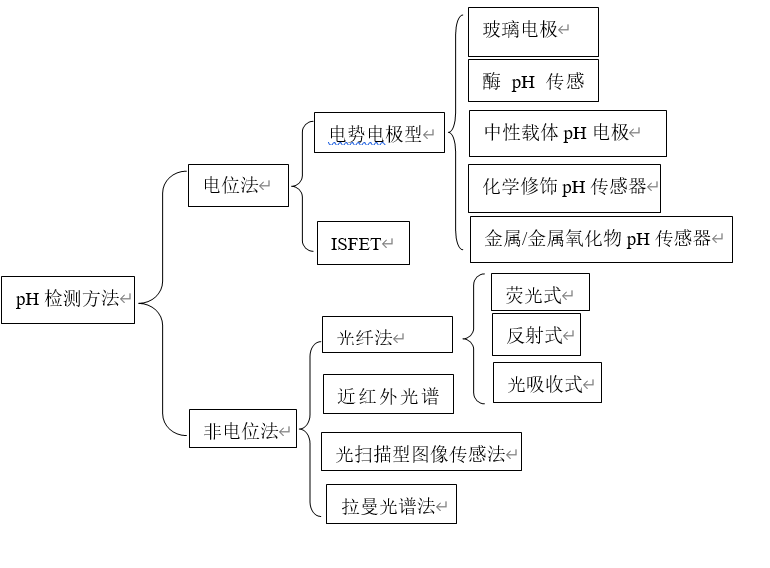 长期以来,pH传感器的研究受到了广泛关注。pH传感器可以电化学式pH传感器和光学式pH传感器。现将pH的检测方法总结如下并简要介绍几类pH传感器:
长期以来,pH传感器的研究受到了广泛关注。pH传感器可以电化学式pH传感器和光学式pH传感器。现将pH的检测方法总结如下并简要介绍几类pH传感器:
图1-1:pH检测方法总结
- 电化学传感器
- pH玻璃电极
pH玻璃电极是目前国内外检测pH值的最常用的电极。用玻璃电极检测pH有很多优点:方法简单,选择性高,结果准确,受干扰因素较少[1]。但是pH玻璃电极还有许多缺点和不足之处:玻璃容易破碎,不宜在强酸强碱环境中使用。另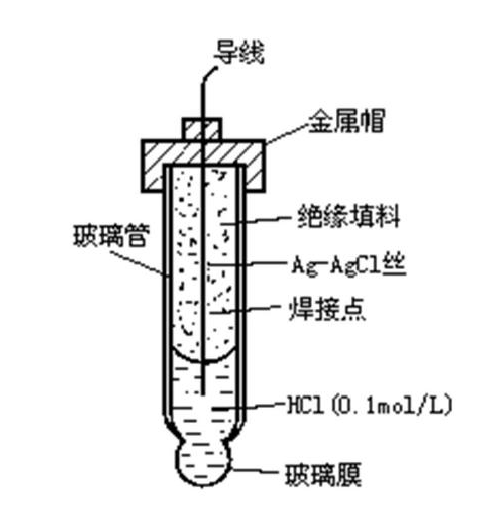 外,含有F-的试剂无法使用该法检测。
外,含有F-的试剂无法使用该法检测。
图1-2 pH玻璃电极
- 酶pH传感器
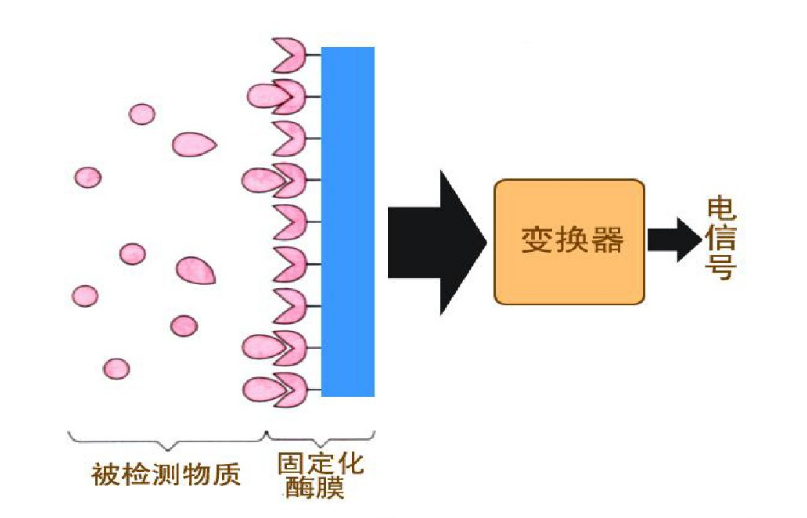 酶是蛋白质分子,它具有催化的专一性及其对底物的催化能力,这是它能够制成pH传感器的基础[2]。如何把酶固定在电极上是制备酶pH传感器的重要内容[3],一种酶一般只催化一种反应,这使酶pH传感器具有很高的灵敏度,但是因为酶能够存活的时间非常短以及酶在电极上的固定非常难,所以酶pH传感技术尚未普及。
酶是蛋白质分子,它具有催化的专一性及其对底物的催化能力,这是它能够制成pH传感器的基础[2]。如何把酶固定在电极上是制备酶pH传感器的重要内容[3],一种酶一般只催化一种反应,这使酶pH传感器具有很高的灵敏度,但是因为酶能够存活的时间非常短以及酶在电极上的固定非常难,所以酶pH传感技术尚未普及。
图1-3 酶pH传感器原理示意图
- 中性载体膜pH电极
中性载体膜pH电极具有容易制备,不易损坏,膜特性阻抗低,易于小型化等优点。有内充液的电极在用于pH测量之前必须先有一个内部参比电极[4],这非常不方便应用,因此有学者准备了一个中型载体膜固态触摸控制器[5]。Han.Won-Sik等[6-8]以联苄基芘甲胺为中性载体制成固体触摸电极。该电极具有选择性好和重现性好的优点。然而,中性载体膜pH电极,因为膜与电极表面之间的相互作用力基本上都是粘附力,这导致膜与电极表面结合不牢,非常容易掉落并危及电极的使用寿命。
- 光化学传感器
光化学pH传感器是一种用于检测pH值的仪器。当检测样本中的H 发生改变时,光化学pH传感器的光学性能发生响应的改变,进而导致传感器发出来的荧光信号随着氢离子浓度的变化而发生变化[9-11]。对变化了的光信号进行分析便可以测得样品的pH值。
请支付后下载全文,论文总字数:25271字
相关图片展示:


